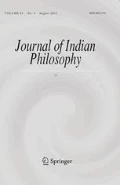Abstract
U. Vē. Cāminātaiyar (1885–1942) is arguably one of the most influential figures of the so-called “Tamil Renaissance” of the nineteenth and early twentieth centuries; his work has profoundly shaped the study of Tamil literature, both in India and the Euro-American academy, for more than a century. Among his many literary works is a long and incomplete autobiographical treatise known as Eṉ Carittiram, literally “My Life Story,” initially published in 122 installments between 1940 and 1942. What little scholarly attention this fascinating autobiographical narrative has received thus far has largely read the text as an artless, transparent documenting of South Indian literary culture in the late nineteenth century. Yet the text reveals substantial rhetorical art on close reading. Greater attention to Cāminātaiyar’s specific context and probable concerns when composing (and publicly publishing) Eṉ Carittiram suggests alternative ways of reading Tamil literary history and those texts that he first made widely available.
Similar content being viewed by others
References
Arnold D., Blackburn S. (2004) Introduction: Life histories in India. In: Arnold D., Blackburn S. (eds) Telling lives in India: Biography, autobiography, and life history. Indiana University, Bloomington, pp 1–28
Cāminātaiyar, U. Vē. (1958). Eṉ carittiram (Ki. Vā. Jakaṉṉātaṉ Abr.). Ceṉṉai: Tiyākarāja Vilācam.
Cāminātaiyar, U. Vē. (1976). A poet’s poet: Life of Maha Vidwan Meenakshisundaram Pillai, based on the biography in Tamil by Mahamahopdhyaya Dr. U. V. Swaminathaiyer (S. K. Guruswamy, Trans.). Madras: Mahamahopadhyaya Dr. U. V. Swaminatha Iyer Library.
Cāminātaiyar, U. Vē. (1982). Eṉ carittiram. Ceṉṉai: Makāmahōpāttiyāya U. Vē. Cāminātaiyar Nūl Nilaiyam.
Cāminātaiyar, U. Vē. (1986). Śrī Mīṉāṭcicuntaram Piḷḷaiyavarkạliṉ carittiram (2 Vols.). Tañcāvūr: Tamiḻ Palkalai Kaḻakam.
Cāminātaiyar, U. Vē. (1990). The story of my life (Eṉ carittiram) (2 Vols.) (K. V. Zvelebil, Trans.). Madras: Institute of Asian Studies.
Cāttaṉār. Maṇimēkalai. (1981). U. Vē. Cāminātaiyar (Ed.). Ceṉṉai: Ṭākṭar U. Vē. Cāminātaiyar Nūl Nilaiyam.
Cutler N. (2003) Three moments in the genealogy of Tamil literary culture. In: Pollock S. (Ed.) Literary cultures in history: Reconstructions from South Asia. University of California, Berkeley, pp 271–322
Ebeling S. (2010) Colonizing the realm of words: The transformation of Tamil literature in nineteenth-century south India. State University of New York, Albany
Gandhi M.K. (1957) An autobiography: My experiments with truth. Beacon Press, Boston
Gros, F., Kannan, M. (eds) (2009) Passages: Relationships between Tamil and Sanskrit. French Institute of Indology/University of California, Pondicherry/Berkeley
Hart G.L. (1975) The poems of ancient Tamil: Their milieu and their Sanskrit counterparts. University of California, Berkeley
Irschick E.F. (1969) Politics and social conflict in south India: The Non-Brahmin movement and Tamil separatism. University of California, Berkeley
Irschick, E. F. (1986). Tamil revivalism in the 1930s. Madras: Cre-A.
Irschick E.F. (1994) Dialogue and history: Constructing South India, 1795–1895. Oxford University, Delhi
Kampaṉ. (1988). The forest book of the Rāmāyaṇa of Kampaṉ (G. L. Hart & H. Heifetz, Trans.). Berkeley: University of California.
Kaplan A. (1992) The rhetoric of circumstance in autobiography. Rhetorica: A Journal of the History of Rhetoric 10(1): 71–98
Nambi Arooran K. (1980) Tamil renaissance and Dravidian nationalism. Koodal, Madurai
Ramaswamy S. (1997) Passions of the tongue: Language devotion in Tamil India, 1891–1970. University of California, Berkeley
Ramaswamy S. (1998) Language of the people in the world of the gods: Ideologies of Tamil before the nation. Journal of Asian studies 57(1): 66–92
Sivathamby K. (1986) Literary history in Tamil: A historiographical analysis. Tamil University, Thanjavur
Zvelebil K.V. (1973) The smile of Murugan on Tamil literature of South India. E. J. Brill, Leiden
Zvelebil K.V. (1995) A lexicon of Tamil literature. Brill, New York
Author information
Authors and Affiliations
Corresponding author
Rights and permissions
About this article
Cite this article
Monius, A.E. U. Vē. Cāminātaiyar and the Construction of Tamil Literary “Tradition”. J Indian Philos 39, 589–597 (2011). https://doi.org/10.1007/s10781-011-9126-z
Published:
Issue Date:
DOI: https://doi.org/10.1007/s10781-011-9126-z




